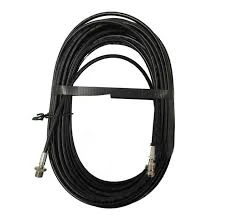R134a Refrigerant Charging Hose and Pressure Gauge for Vehicle AC Maintenance
Understanding R134a Recharge Hoses and Gauges
In the world of automotive air conditioning systems, R134a has become a standard refrigerant for many vehicles. As air conditioning systems require periodic recharging to maintain their efficiency and performance, understanding the tools used for this purpose—specifically, recharge hoses and gauges—is crucial for both professionals and DIY enthusiasts alike.
What is R134a?
R134a, also known as tetrafluoroethane, is a hydrofluorocarbon (HFC) refrigerant. It has replaced the older R12 refrigerant primarily due to its lower ozone-depletion potential. Automakers began adopting R134a in the early 1990s, and it quickly became the refrigerant of choice for many air conditioning systems in cars, trucks, and even some home appliances. It is crucial for anyone working with automotive air conditioning to be familiar with R134a and its applications.
The Importance of Refrigerant Maintenance
Like any fluid, refrigerants can leak from systems over time, leading to reduced cooling efficiency. Inadequate refrigerant levels can strain the compressor, potentially leading to costly repairs. Therefore, regularly checking the refrigerant level and recharging the system when necessary is important for optimal performance. This is where recharge hoses and gauges come into play.
Recharge Hoses What They Are and How They Work
A recharge hose is a specialized tool designed to transfer refrigerant into the vehicle’s air conditioning system. Generally, it consists of a high-pressure hose with a fitting that connects to the refrigerant canister on one end and a service port on the other end that connects to the vehicle’s air conditioning system.
Recharge hoses often come equipped with a built-in shut-off valve to prevent refrigerant from escaping when not in use. Additionally, there are two types of hoses available low-pressure hoses, designed for connecting to the low-pressure service port, and high-pressure hoses, for the high-pressure port. It’s essential to understand which port is which to prevent damage to the vehicle's system and to ensure safety during the process.
Gauges Monitoring System Pressure
To effectively recharge an air conditioning system with R134a, a manifold gauge set is also required. This set typically includes two gauges one for the low-pressure side and one for the high-pressure side of the system. The low-pressure gauge reads values from the evaporator side of the system, while the high-pressure gauge indicates the pressure in the condenser.
r134a recharge hose and gauge

Using these gauges allows you to monitor the pressure of the refrigerant as it enters the system, helping you ascertain whether the system has adequate refrigerant before recharging. For example, if the low-pressure side is reading below the specified range while the engine and AC are running, it indicates a potential leak or that the system is low on refrigerant.
The Recharge Process
The process of recharging R134a into an automotive air conditioning system involves several critical steps
1. Preparation Start by turning on the vehicle and its air conditioning system. Allow the AC to run for a few minutes to ensure the system is operating and will provide an accurate pressure reading.
2. Connecting the Hoses Attach the low-pressure hose to the low-pressure service port, ensuring a secure fit. The same goes for the gauge, which should be connected according to the manufacturer's guidelines.
3. Reading the Gauges Check the pressure displayed on the low-pressure gauge. Compare it with the manufacturer’s specifications to determine if a recharge is necessary.
4. Recharging the System If the system is low, open the valve on the refrigerant can to allow R134a to flow into the system. Keep an eye on the gauges during this process to avoid overcharging, which can lead to system failure.
5. Final Checks After recharging, disconnect the hoses and observe the air conditioning system’s performance. Retest the pressures to ensure everything is within specified limits.
Conclusion
Understanding R134a recharge hoses and gauges is essential for anyone involved in automotive air conditioning maintenance. By ensuring that you have the right tools and knowledge, you can effectively recharge your vehicle’s AC system, extending its lifespan and optimizing its performance. This knowledge not only saves money on professional service but also empowers you to handle automotive maintenance with confidence.
-
Ultimate Spiral Protection for Hoses & CablesNewsJun.26,2025
-
The Ultimate Quick-Connect Solutions for Every NeedNewsJun.26,2025
-
SAE J1401 Brake Hose: Reliable Choice for Safe BrakingNewsJun.26,2025
-
Reliable J2064 A/C Hoses for Real-World Cooling NeedsNewsJun.26,2025
-
Heavy-Duty Sewer Jetting Hoses Built to LastNewsJun.26,2025
-
Fix Power Steering Tube Leaks Fast – Durable & Affordable SolutionNewsJun.26,2025

